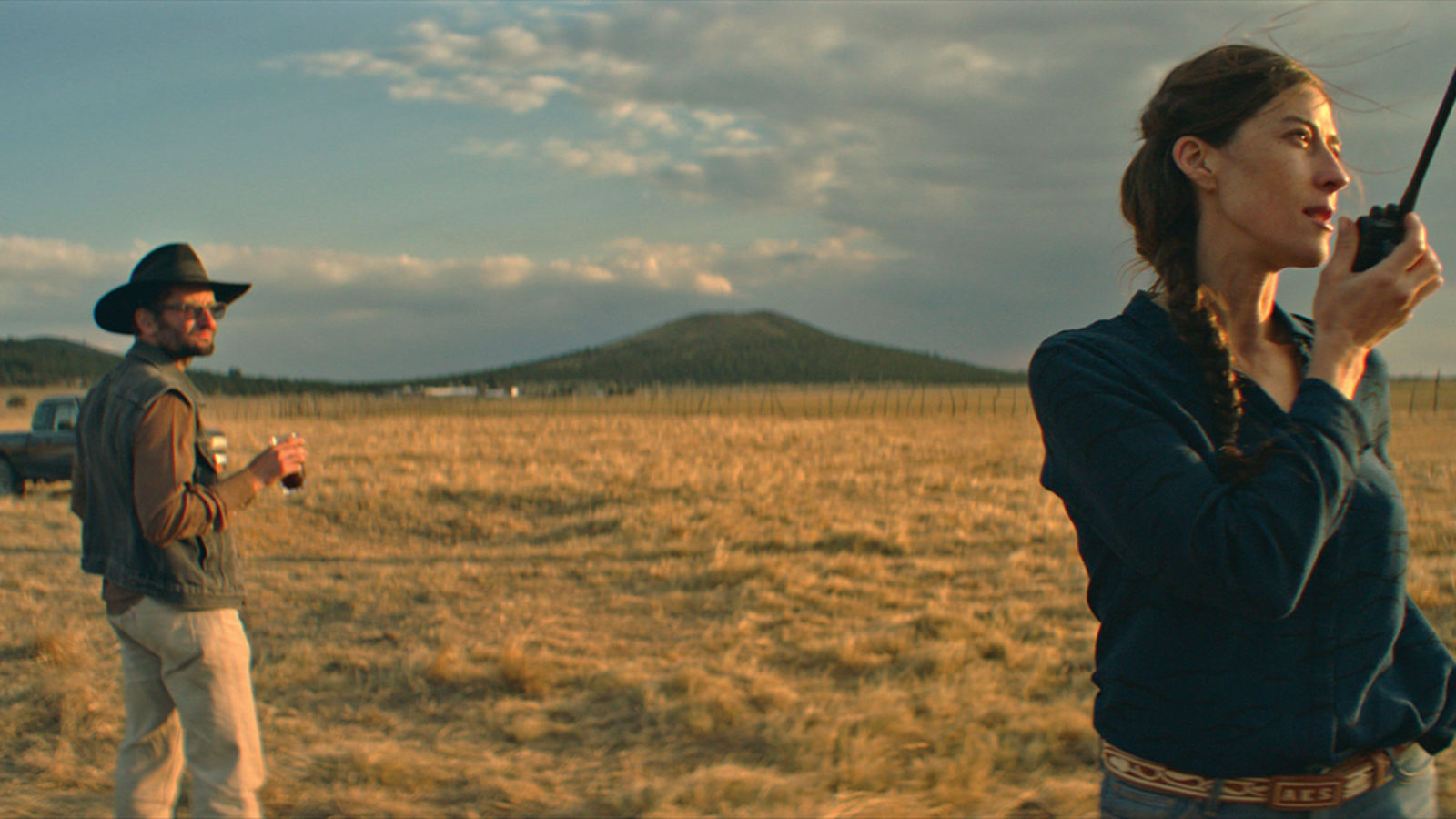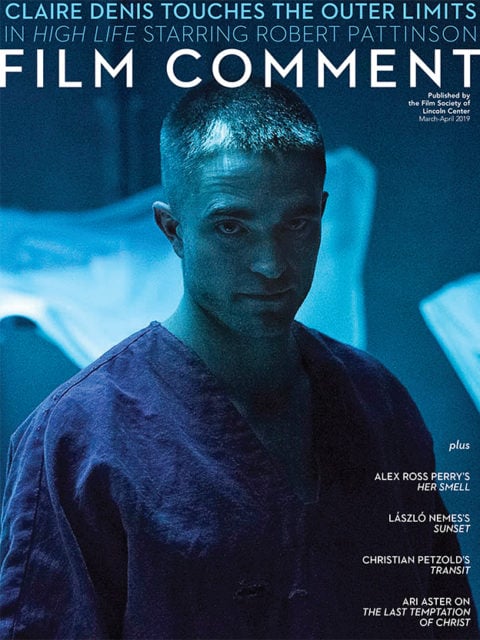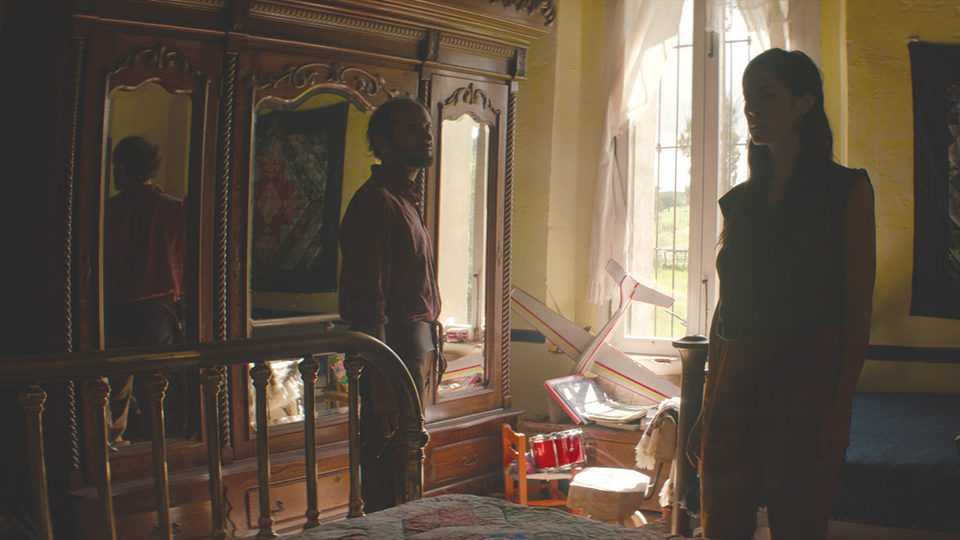
The All-Seeing Eye
These aren’t ideal times for treading the soft soil of cinematic hybridity. It’s become harder to justify flights of factual indeterminacy. Questions that might have been stimulating as rhetoric or theory—what is truth? does the camera only lie? are people only ever performing?—feel queasier in a political environment where such indeterminacy has been perverted and weaponized. The questions remain—in fact they’ve taken on greater weight—but it’s not something to fuck with, not something to kick around as idle provocation. This puts documentaries in a tricky place, particularly documentaries that aim to wrestle with rather than affirm their own authority. In immensely insecure times, revealing the fictive edges of the nonfiction canvas can seem like an aggressive pile-on, regardless of honest intent.

Maybe it’s time to invert the picture, consider the photographic negative. Maybe instead of emphasizing how filmic reality is truly constructed and performed, it’s worth acknowledging that there’s a world that exists, continuously, outside of whatever the hell we’re filming or seeing. What about the non-fictive edges of our fictional canvases? This is something I’ve been contemplating thanks to Our Time, the new film by Carlos Reygadas. After debuting at Venice last year, it recently played as part of this year’s Neighboring Scenes: New Latin American Cinema at the Film Society. It’s also part of this year’s True/False Film Fest program, even though it’s not a work of documentary.
In the first hour of this three-hour film, Juan (played by Reygadas himself) is fixated on the fact that his wife Esther (Reygadas’s wife, film editor Natalia López), is lying to him. He knows she’s lying and furthermore knows what she’s lying about: she’s sleeping with another man. But her inability to admit what she’s doing is what seems to rile him. He wants her to confess to what he already knows she’s doing. His attitude resonates with how we scrutinize films that purport to be true: we know they can’t be entirely “true,” yet we still react as if we or reality itself are being wronged by the potential perfidies. Yet what really matters goes beyond such admissions, and ultimately beyond articulation. Esther is being less than honest with Juan in order to be true to herself. He wants to control that which can’t be, and the uncontrollability of it all is evident in every frame of Our Time. Whether or not Juan or Esther are telling the truth, whether or not Reygadas and López are making a truth, there’s a bigger reality that doesn’t care either way.
Our Time has the superficial trappings of a classic hybrid film of the early ’70s—something in the mold of Norman Mailer’s Maidstone. The film takes place on Reygadas and López’s actual cattle ranch in Mexico, and their actual children play out scenes in their actual home. Knowing these facts, one can’t help but wonder how much of what transpires in the film is based on their actual marriage. Yet what comprises the narrative of the film is clearly scripted and performed, choreographed and composed. Regardless of whatever backstory’s informing these scenes, or whatever the film may have yielded in the days following, we are not watching a marriage fall apart in real time.
And so what exactly are we watching? That’s a much harder question to tackle, one that freights what’s truly nonfictional, or more accurately extra-fictional, about what’s being explored by Reygadas, López, cinematographer Diego Garcia, et al. It’s a film in which fabrications share the frame with natural phenomena, in which staged scenes give way to spontaneous life, in which the unexpected and inexplicable invade what had seemed situationally familiar. Our Time is the kind of film that’s capable of inverting our entire understanding of cinematic truth. Instead of everything being a form of fiction, of degrees of lies and fakery we’re left to discern, it suggests, rather, that everything witnessed or heard, serving whatever purpose and taking on whatever quality, belongs to the same collective nonfictional frame.

Though their uses of editing are diametrically different, Reygadas’s work here—along with preceding projects Post Tenebras Lux, Silent Light, Battle in Heaven, and Japón—at least conjures that of recent Terrence Malick. Both have sought to net the truth behind the truth, refining a discipline with which to honor the innate integrity of the moment. Where Malick offers up fleeting fragmented glimpses, Reygadas dwells. He pans, follows, pushes in, and waits. A dialogue plays out, the characters then exit the frame, and yet the shot continues. What often populates these shots are things that transcend and disregard what had comprised the scene—the wind in the trees, a setting sun, the wandering of dogs, horses, and cattle. There’s no question that we’ve just watched a fictionalized encounter. But we’re also being challenged to situate that encounter within a nonfictionalized world. And while the wider reality, the same natural laws, apply to every film project—and to every person, for that matter—Reygadas’s project emphasizes that the outer layer is the one in command.
The effect isn’t to invalidate what happens in the film—though it does put some of Juan’s self-involved flailings into perspective. (A sequence in which he weeps over his marriage while seated with a dying friend takes the cake, as it were.) Instead everything that happens in the film gets swept up in the whistling wildness of existence. We think we understand things, but really we don’t. And there can be immense comfort in that. Excitement too. While Esther delivers a long letter to her husband via voiceover, a letter of deep consequence for their marriage, the camera floats high above a city. The longer the sequence takes, the less sense it seems to make. What are we watching and why? Why is this audio being paired with this image? By the time the camera is revealed to be located not on a drone but on the underside of a jet plane, ending with a bracing landing from effectively the POV of the tire, there’s no accounting for anything. It’s all just happening at once, and it’s a lot.
Actors are acting, yes. Scripted scenes are playing out. But part of what’s helpful in terms of the trappings of Reygadas’s personal life is how they provide an existing reality from which to start, and to which to return. The mud is mud. The land is land. The animals are animals. And performance aside, the bodies are real. This is always the case with live action films, but we’re rarely invited to think about it, to confront the fact that much of what’s contained in the diorama also transcends it. It changes how we watch things unfold. Carlos and Natalia—they don’t belong to us, much as Esther doesn’t belong to Juan. Much as the cattle and horses don’t belong to them, even if they try their best to corral and control. Juan’s cuckolded fixations attempt to tame that which he doesn’t understand. He doesn’t grasp whatever’s driving Esther, while Esther, if she even grasps it herself, isn’t prepared, willing, or even obliged to explain it to him. Some part of reality remains unavailable to Reygadas, or to us. The narrative expresses this, but so do the images, and so do the sacred and profane cycles that supersede it all. A wild bull disembowels a horse. Another bull pushes a rival off a cliff. It’s not really a metaphor—Juan and his rival clumsily contend with one another without any equivalent violence—it’s just what happens, what’s always happening. A character gets into a jeep and drives off into the distance, and the camera follows before holding on the sunset. The shot’s beautifully timed, of course, but the sun’s going to descend regardless.
Our Time borrows its time from what’s always progressing; it’s both recording and representing life in relation to larger existence. You could say that personal lives and the natural world provide a backdrop to the film’s narrative. But really it’s that Reygadas is stealing and bending select moments from a non-fictional reality that’s wilder and less predictable than anything he or we could ever devise. It’s daunting, but also inviting. The truth will always find us out.
Eric Hynes is a journalist and critic, and curator of film at Museum of the Moving Image in New York.







